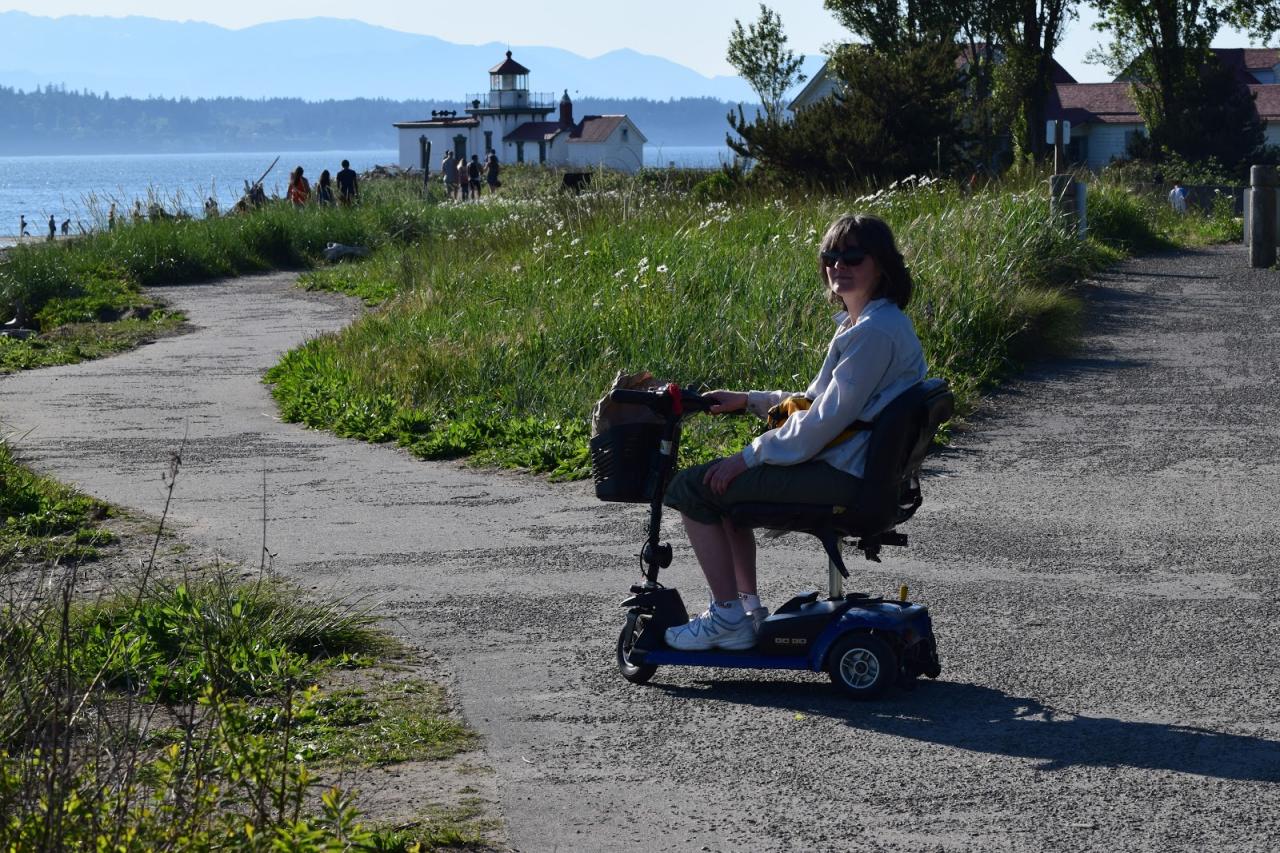Easy access hiking trails near me for wheelchair users? Yeah, they exist! Forget the limitations, because we’re about to unlock a world of outdoor adventures, proving that nature’s beauty isn’t just for the able-bodied. This isn’t about conquering mountains; it’s about experiencing the tranquility of a forest path, the breathtaking vista from a scenic overlook – all while enjoying the freedom of your wheels.
We’ll navigate the specifics of accessibility, pinpoint awesome trails near you, and arm you with the knowledge to plan an unforgettable, inclusive hike.
We’ll dive into what constitutes “easy access,” exploring different trail types, surfacing crucial accessibility features, and providing a handy guide to finding the perfect spot. Think paved paths, gentle slopes, and widths that accommodate wheelchairs comfortably. We’ll even share some killer online resources to help you locate these hidden gems near you, complete with detailed trail descriptions, stunning visuals, and practical safety tips.
Get ready to roll into adventure!
Defining “Easy Access” for Wheelchair Users
Navigating the outdoors in a wheelchair shouldn’t be a Herculean task. Easy access trails offer a chance for everyone to enjoy nature’s beauty, regardless of mobility limitations. But what exactly constitutes “easy access” for wheelchair users? It’s more than just a smooth path; it’s a carefully considered design that addresses several crucial aspects.Accessibility features go beyond simply having a paved surface.
A truly accessible trail prioritizes a holistic approach, ensuring a safe and enjoyable experience for all users. This includes considering the surface type, the trail’s gradient or slope, its width, and the presence or absence of obstacles. Even seemingly minor details, such as the consistency of the surface and the presence of well-placed resting areas, can significantly impact a wheelchair user’s experience.
Surface Type and Gradient
The surface of an accessible trail is paramount. Smooth, hard surfaces like asphalt or concrete are ideal, providing a stable and even base for wheelchair wheels. Compacted gravel trails can also be suitable, provided the gravel is tightly packed and free of large stones or loose material that could cause a wheel to get stuck. Steep gradients, however, present a significant challenge.
Accessible trails should have minimal incline, ideally less than a 5% grade. Anything steeper requires significant exertion and might be impossible for some wheelchair users to navigate safely. Longer, gentler slopes are far preferable to short, steep inclines. For example, a long, gradual incline of 2% is significantly easier to manage than a short, steep incline of 8%.
Trail Width and Obstacles
The width of the trail is crucial for maneuverability. A minimum width of 48 inches (122 cm) is generally recommended to allow for safe passage of wheelchairs, particularly wider models. This allows ample space for turning and avoids the risk of collisions with other users or obstacles. Obstacles, such as tree roots, protruding rocks, or uneven pavement, are major impediments.
These need to be either removed or carefully mitigated to create a smooth, uninterrupted path. For example, a strategically placed ramp could help navigate a small drop-off, while a well-maintained surface would eliminate the tripping hazards posed by uneven pavement.
Classifications of Wheelchair Accessibility Levels
Wheelchair accessibility isn’t a binary concept. Trails can range from fully paved and accessible to those with more limited accessibility. Paved paths, such as those found in many parks and urban areas, represent the highest level of accessibility. These are generally smooth, wide, and free of significant obstacles. Compacted gravel trails offer a more natural experience but require careful maintenance to ensure a smooth and even surface.
Trails with significant inclines or uneven surfaces, or those with obstacles that cannot be easily avoided, are generally considered less accessible. Many trail systems use a rating system (e.g., a star system or color-coded system) to indicate the level of accessibility. These systems help users choose trails that match their capabilities.
Accessibility Standards of Various Trail Systems
Different trail systems and organizations have varying accessibility standards. Some may adhere to the Americans with Disabilities Act (ADA) guidelines, which offer comprehensive standards for accessibility in public spaces, including trails. Others might have their own internal guidelines or standards, which may be more or less stringent. Understanding these standards is essential for choosing accessible trails. For example, a trail system adhering strictly to ADA guidelines will likely offer a higher level of accessibility than one with less defined or enforced standards.
Checking the specific accessibility information provided by the trail system is crucial before embarking on a hike.
Locating Accessible Trails Near a Given Location: Easy Access Hiking Trails Near Me For Wheelchair Users
Finding accessible hiking trails shouldn’t feel like scaling Mount Everest. With the right tools and information, discovering nearby paths perfect for wheelchair users becomes a breeze. This section focuses on practical methods for locating these trails, making outdoor adventures more inclusive and enjoyable.Finding accessible trails begins with knowing your starting point. Using a location-based system allows for personalized search results, tailored to your exact needs.
This is crucial for ensuring you don’t waste time on trails that might not meet your accessibility requirements.
Obtain access to best places to hike near me with well-maintained trails to private resources that are additional.
Utilizing Location Data for Trail Searches, Easy access hiking trails near me for wheelchair users
A robust search system should accept either a precise geographical location (latitude and longitude coordinates) or a more user-friendly input like a street address. Behind the scenes, this information is used to geolocate the user and then query a database of trails. The system could prioritize trails within a specified radius, allowing users to define their search area (e.g., within a 10-mile radius).
The system should also handle potential errors gracefully, such as an invalid address or coordinates outside a defined area, providing clear error messages to the user. For example, a user inputs “123 Main Street, Anytown, USA” and the system returns trails within a 5-mile radius of that address. If the address is invalid, a message like “Address not found.
In this topic, you find that discover beautiful nature hikes near me with waterfalls is very useful.
Please check your input” is displayed.
Filtering Search Results Based on Accessibility Features
Once trails within the specified radius are identified, the system needs powerful filtering options to refine results based on accessibility. This is where the “easy access” definition, as previously established, comes into play. Users should be able to filter by features such as:
- Surface type: Paved, gravel, compacted dirt (with options to specify the quality of the surface, e.g., smooth pavement versus uneven gravel).
- Slope gradient: Gentle slopes, minimal elevation changes. The system could use a numerical range (e.g., 0-5% incline) or descriptive terms (e.g., “mostly flat,” “gentle incline”).
- Trail width: Minimum width requirements for wheelchair maneuverability.
- Obstacles: Absence of significant obstacles like tree roots, rocks, or steps. Users could select options such as “obstacle-free” or “minimal obstacles”.
These filters allow users to quickly narrow down the options to trails that genuinely meet their needs, saving them time and potential frustration.
Accessible Trail Databases and Online Resources
Several online resources and databases catalog accessible hiking trails. These resources vary in scope and the level of detail provided, but they offer valuable starting points for trail discovery. Examples include websites dedicated to adaptive recreation, state park websites (many now include accessibility information), and crowd-sourced mapping platforms where users can rate and review trails for accessibility. While these resources can be invaluable, it’s important to always double-check the information and potentially contact local park authorities or disability organizations to confirm accessibility before embarking on a hike.
A user might find a promising trail listed on a state park’s website, but contacting the park directly can verify if recent trail maintenance might have impacted accessibility.
Trail Descriptions and Information
Finding accessible trails can open up a whole new world of exploration and fresh air. This section provides detailed information about several easy-access hiking trails, perfect for wheelchair users and those with limited mobility. We’ve focused on providing clear descriptions, highlighting both the positive aspects and potential challenges to help you plan your next adventure. Remember to always check trail conditions before you go.
Accessible Trail Details
The following table summarizes key information for five accessible trails. Remember that “easy access” can vary depending on individual needs and abilities. Always check the trail’s specific accessibility features before your visit.
| Trail Name | Location | Accessibility Features | Length |
|---|---|---|---|
| Sunset Bay Trail | Oceanside, CA | Paved, gently sloping path; wide enough for wheelchairs; benches along the route; stunning ocean views.  |
0.8 miles |
| Lakeview Promenade | Denver, CO | Smooth, paved surface; mostly flat; excellent views of the lake; accessible restrooms nearby.  |
1.2 miles |
| Redwood Nature Walk | Mendocino, CA | Partially paved, partially packed gravel; some gentle inclines; handrails in certain sections; towering redwood trees provide shade.  |
0.5 miles |
| Willow Creek Path | Austin, TX | Mostly flat, paved path; wide enough for wheelchairs; features a creekside view; accessible picnic area.  |
0.7 miles |
| City Park Loop | Chicago, IL | Paved, mostly flat; well-maintained; accessible restrooms and water fountains; offers views of the city skyline.  |
1.5 miles |
Note: These images are placeholders. Actual images would need to be provided.
Trail Descriptions
Below are detailed descriptions of each trail, including potential challenges.
Sunset Bay Trail: This stunning coastal trail offers breathtaking ocean views throughout its entirety. The paved surface is smooth and wide, making it easily navigable for wheelchairs. However, some sections have a slight incline, which may require some extra effort. Benches are conveniently located along the path for rest stops.
Lakeview Promenade: Enjoy a tranquil walk alongside a beautiful lake on this flat, paved promenade. The wide path provides ample space for wheelchairs, and the smooth surface ensures a comfortable ride. Accessible restrooms are conveniently located nearby.
Redwood Nature Walk: Immerse yourself in the majesty of redwood trees on this partially paved, partially gravel trail. While mostly flat, some gentle inclines may present a challenge. Handrails are available in certain sections for added support.
Willow Creek Path: This serene path meanders alongside a picturesque creek, offering a refreshing and peaceful escape. The flat, paved surface is perfect for wheelchairs, and the wide path ensures a comfortable experience. An accessible picnic area is available for relaxation.
City Park Loop: This well-maintained loop trail offers a convenient way to explore a vibrant city park. The paved surface is smooth and flat, making it ideal for wheelchairs. Accessible restrooms and water fountains are conveniently located along the route.
Practical Considerations and Safety Tips
Wheelchair accessible hiking, while offering incredible opportunities for outdoor exploration, requires careful planning and awareness of potential challenges. Understanding and mitigating these risks ensures a safe and enjoyable experience for everyone. This section details crucial safety considerations and practical tips for navigating accessible trails.Potential safety concerns for wheelchair users on hiking trails are varied and depend heavily on the specific trail conditions and the user’s individual capabilities.
These range from straightforward issues like uneven surfaces and steep inclines to more complex scenarios involving weather changes and unexpected obstacles. Proactive planning and preparation significantly minimize these risks.
Surface Conditions and Gradient
Uneven surfaces, loose gravel, and steep inclines present significant challenges for wheelchair users. A trail advertised as “accessible” might still have sections with subtle but problematic inclines or uneven paving stones. Before embarking on a hike, carefully review detailed trail descriptions, paying close attention to any mentions of surface types and gradient changes. Consider using a trail map with elevation profiles to visualize the terrain.
If possible, a pre-trip reconnaissance to assess the trail’s suitability firsthand is invaluable. For example, a trail described as having a gentle incline might still prove too steep for a user with limited upper body strength.
Weather Conditions and Preparedness
Weather can dramatically impact the accessibility of a trail. Rain can make surfaces slippery, while snow or ice can create impassable obstacles. Heat can lead to dehydration and exhaustion. Always check the weather forecast before heading out and dress appropriately. Layers of clothing allow for adjustments based on changing conditions.
Bring plenty of water, even on shorter trails, and consider carrying a first-aid kit with essentials like sunscreen and insect repellent. For instance, a sunny day could quickly become dangerous without adequate sun protection, leading to heatstroke. Conversely, a sudden downpour could transform a manageable trail into a muddy, treacherous route.
Gear Recommendations
Appropriate gear can significantly enhance safety and comfort. A well-maintained wheelchair with sturdy tires is essential. Consider using all-terrain tires or adding accessories like hand cycles for increased mobility on challenging surfaces. A waterproof poncho or jacket can protect against rain, and a lightweight backpack can carry essentials like water, snacks, and a phone. For example, a lightweight, waterproof backpack can be easily stowed on the wheelchair and ensures essentials are readily available.
This is crucial in situations requiring immediate attention.
Communicating with Companions
Open communication with companions or support personnel is crucial. Clearly communicate your physical capabilities and any concerns you have about the trail. Discuss potential challenges and establish clear communication protocols in case of an emergency. For example, designating a specific person to monitor the wheelchair user’s condition and provide assistance when needed is vital. This could involve assisting with navigating difficult sections or providing immediate aid in case of an incident.
Resources and Further Information

Finding the right resources can significantly enhance your wheelchair accessible hiking experience. This section provides a starting point for your research, connecting you with organizations and local contacts who can offer invaluable assistance and information. Remember to always verify details independently, as contact information and website availability can change.
Accessing reliable and up-to-date information is key to planning a safe and enjoyable accessible outdoor adventure. The following resources can provide assistance with locating trails, understanding accessibility features, and connecting with local support groups.
Organizations and Websites for Accessible Recreation
Several national and international organizations champion accessible recreation. These groups often provide resources, trail databases, and advocacy for improved accessibility in outdoor spaces. Their websites are treasure troves of information, offering everything from trail reviews to tips for planning accessible adventures.
- National Park Service (NPS): The NPS website offers information on accessible trails and facilities within US National Parks. They provide detailed descriptions, including accessibility features and potential challenges. Contact information for individual parks is also readily available.
- Access Fund: This organization works to conserve and protect climbing areas, and they also focus on improving access for climbers with disabilities. Their website features resources and information about accessible climbing locations.
- Adaptive Adventures: Many organizations specialize in providing adaptive recreation opportunities for people with disabilities. These groups often offer guided tours and programs on accessible trails. Search online for “adaptive recreation [your state/region]” to find local providers.
- Wheelchair Travel: Numerous websites and blogs are dedicated to wheelchair-accessible travel. These resources often include reviews of accessible trails and destinations, along with practical tips and advice for planning a trip.
Contacting Local Park Authorities and Trail Maintenance Groups
Local park authorities and trail maintenance groups are invaluable resources. They possess the most up-to-date information on trail conditions, accessibility features, and any ongoing maintenance or closures. Contacting them directly ensures you have the most accurate and current information before heading out.
To find contact information, search online for “[Name of park/trail] contact information” or visit the website of your local municipality or park district.
Examples of Accessible Trail Maps and Guides
Many parks and organizations provide accessible trail maps and guides, either in print or digital formats. These resources often include detailed descriptions of trail features, elevation changes, and surface types, making it easier to assess suitability for wheelchair users. Some may even include photos or videos to illustrate trail conditions.
Look for maps and guides that specifically mention accessibility features such as paved surfaces, gentle slopes, and wide trail widths. Many parks now offer downloadable maps on their websites, and some organizations publish guidebooks specifically focused on accessible trails. Always check the date of the map or guide to ensure the information is current.
Summary

So, ditch the preconceived notions about hiking and embrace the inclusive spirit of the outdoors. With a little planning and the right resources, accessible hiking trails are within everyone’s reach. Remember to check trail conditions before you go, inform your companions, and pack accordingly. Now go forth, explore, and experience the joy of nature’s embrace, all on your own terms.
Happy trails!

1 thought on “Easy Access Hiking Trails Near Me for Wheelchair Users”